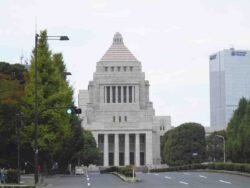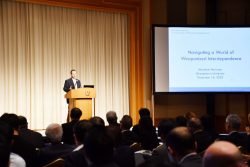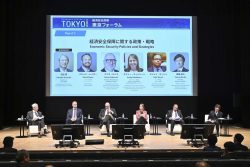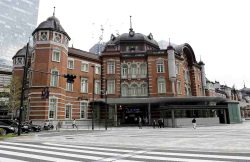
Homes in Guryong last month.
17:11 JST, July 8, 2023
SEOUL – Kim Bok-soon has a million-dollar view from her porch in Gangnam, the upmarket district in southern Seoul that was made internationally famous through K-pop singer Psy’s megahit “Gangnam Style.”
She looks out over some of South Korea’s tallest and glitziest buildings, including high-rise apartment towers so luxurious they have their own spas and indoor golf ranges.
But this is not the lifestyle Kim leads. She is not part of the Mercedes-driving, horse-riding fashionistas of “Gangnam Style.” Her porch sits affront a shack made of plywood panels, scrap plastic and corrugated metal in Guryong, a sprawling shantytown that is technically in the Gangnam district.
The VIP lifestyle is so close, yet so far.
The 60-year-old needs to ride the bus for only two miles to get to the shiny new condo where she works as a maid. But it’s a commute across, she says, “the gulf between the rich and poor.”
“From the marble floor to air-conditioned rooms … everything there makes me feel like I am in a dream,” she said. Her floor is made from sheets of vinyl, and she has only a small fan to contend with the summer heat.
While the distance between Kim’s home and her workplace is small, the socio-economic divide is enormous.
Kim’s situation sums up the widening economic divide, a political and social issue that comes up at every election but has so far proved intractable.
This was encapsulated in 2019 through the Oscar-winning South Korean movie “Parasite,” in which a poor family endures the frustrations felt by many.
The Asian financial crisis of 1997, which triggered business failures and widespread layoffs, set in motion growing economic inequalities.
That gap hit a record last year, when South Korea’s richest 20 percent recorded 64 times the average wealth of the bottom 20 percent.
Making matters worse, many people feel it’s impossible to live out a Korean version of the American Dream.
People “born with a golden spoon” in their mouths can expect to enjoy expensive private education and land cushy jobs thanks to their well-connected families. But those without such privileges – born with “dirt spoons” – say they never have a chance of getting ahead.
Nowhere is this inequality more evident than in the microcosm of Gangnam, home to those who have flourished during South Korea’s economic transformation and those who have not.
Both have their roots in South Korea’s transition from dictatorship to democratic Asian tiger.
In preparation for the 1988 Summer Olympics, Seoul’s military leaders razed run-down neighborhoods to build stadiums, parks and transit networks.
Neighborhoods in southern Seoul – “Gangnam” means “south of the [Han] river” – benefited the most from these projects and quickly became associated with the new South Korea – and the nouveau riche.
But those who were displaced set up squatter settlements in areas like Guryong, which covers about 66 acres and comprises 1,100 households – a number that is steadily getting smaller thanks to fires, floods and other disasters. A blaze in January destroyed some 60 homes in the village.
The government has been trying to redevelop the area for years, but officials, residents and landowners can’t agree on terms.
And so the two extremes exist side by side.
– – –
Conspicuous consumers
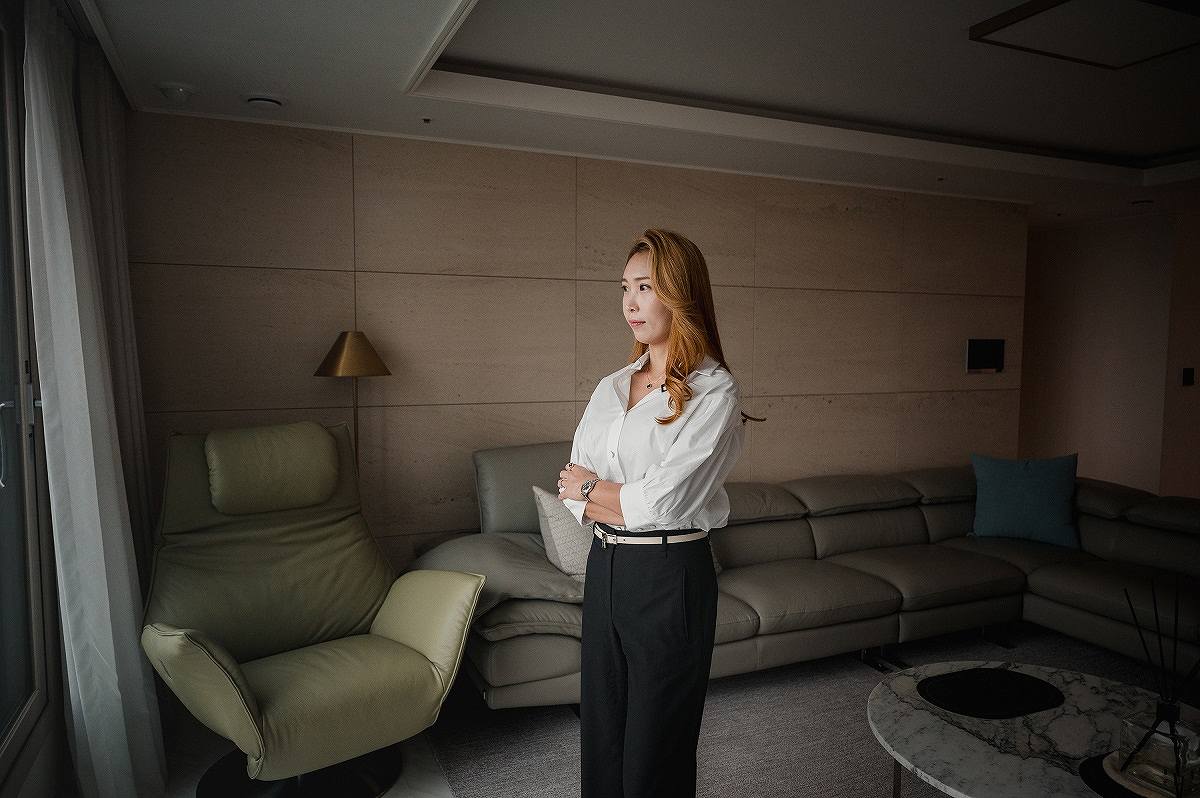
Kim in her living room.
Kim Jin-young, beautician turned property developer, 39
Kim said she climbed the “Gangnam ladder” from bottom to top: From her first home here, a cramped $450-a-month studio that she shared with her husband after they got married 15 years ago to the $3.5 million apartment they live in now.
When they got married, Kim joined her husband in the property development business. It opened her eyes to the inner workings of Gangnam’s upper class.
“I used to think the rich live in a world different from mine,” she said.
Now, she preaches that anyone can enter that world with a tireless work ethic and a proactive attitude, an important mind-set to help navigate high-risk, high-return moves like real estate development investments.
Kim and her husband own properties worth almost $13 million.
She carries a Hermes handbag and recently bought a Lamborghini. She sends her children to private tutors and recently gave her parents a luxury trip to Europe.
“People say money can’t buy happiness, but I am much happier now than when I was out of money,” Kim said.
– – –
Hong Yoon-taek, entrepreneur, 32

Hong outside his office.
Hong opened his start-up company’s first office in Gangnam’s glitzy Cheongdam neighborhood, known for its streets lined with stores like Louis Vuitton and Chanel and traffic jams of Porsches.
He could not really afford the office at the time, but he knew the investment would pay off: He was strategically targeting the 1 percent.
Hong owns a modular construction company and sells prefab housing units that are perfect as vacation cabins for the affluent residents of Gangnam, he said.
The entrepreneur lives just 10 minutes from his office and spends his free time taking full advantage of everything Gangnam has to offer – from exercising along the Han river to exploring fancy local bars and restaurants, all within walking distance.
“Gangnam is the best place for young professionals to live in,” he said. “It surely is expensive but worth the price tag.”
– – –
Lee Won-jun, investment banker, 30

Lee stands by his car in Gangnam.
The securities brokerage where Lee works is one of South Korea’s best paying companies – and among its most high-pressure ones, he said.
To compensate for his long workdays, Lee likes to end the night with rare-vintage wine and single-malt whiskey. On weekends, he drives his sleek BMW to golf resorts for a day on the greens with friends, family or sometimes clients.
Born and raised in Gangnam, Lee acknowledges his comfortable upbringing. As an adult, he needs to “work much harder” to continue enjoying the things he has had in his life. This is something he constantly reminds himself of to endure hectic days at work, which leaves the 30-year-old little time to even date.
The young financier said Gangnam is “not an easy place,” adding that life here comes at a cost. “Since when I was born, Gangnam has been my home, but to keep up with my life here, I have to really hustle to make a lot more money,” he said.
– – –
Jo Yong-seok, 57, company owner
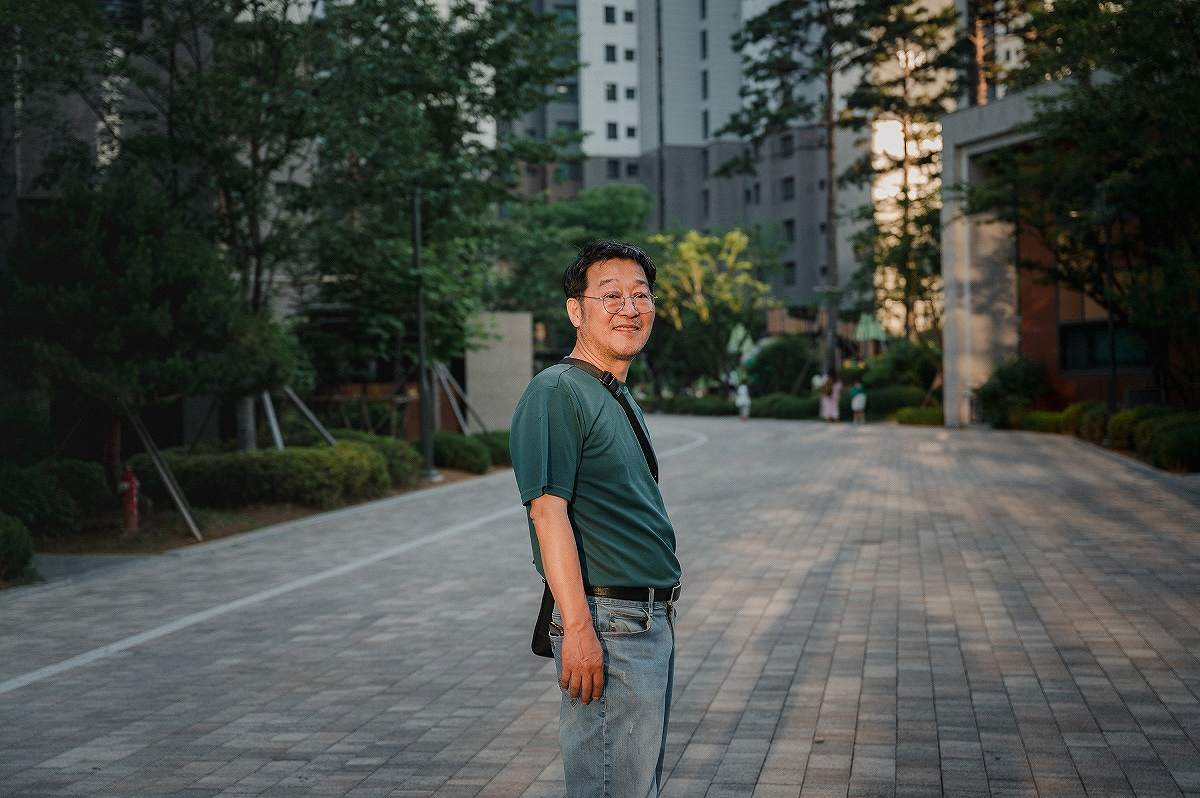
Jo at his Gangnam apartment complex.
His day job is running a logistics company, but Jo describes himself as a “Gangnam dad.” After studying his way out of a southern town to a university in Seoul, Jo got married and had two kids in the city. They settled in Gangnam, Seoul’s best neighborhood for education.
Gangnam has more than 2,400 private “cram schools,” where kids study for hours after their normal day has finished.
In South Korea’s hypercompetitive academic environment, nearly 80 percent of children go to these cram schools, at an average cost of $320 per month, according to Statistics Korea.
But many Gangnam parents, including Jo, spend far more. When his son was doing college prep as a high school senior, Jo was spending $1,500 a month on tutoring.
– – –
In the shadow of luxury
Kim Jung-yeol, 76, retired
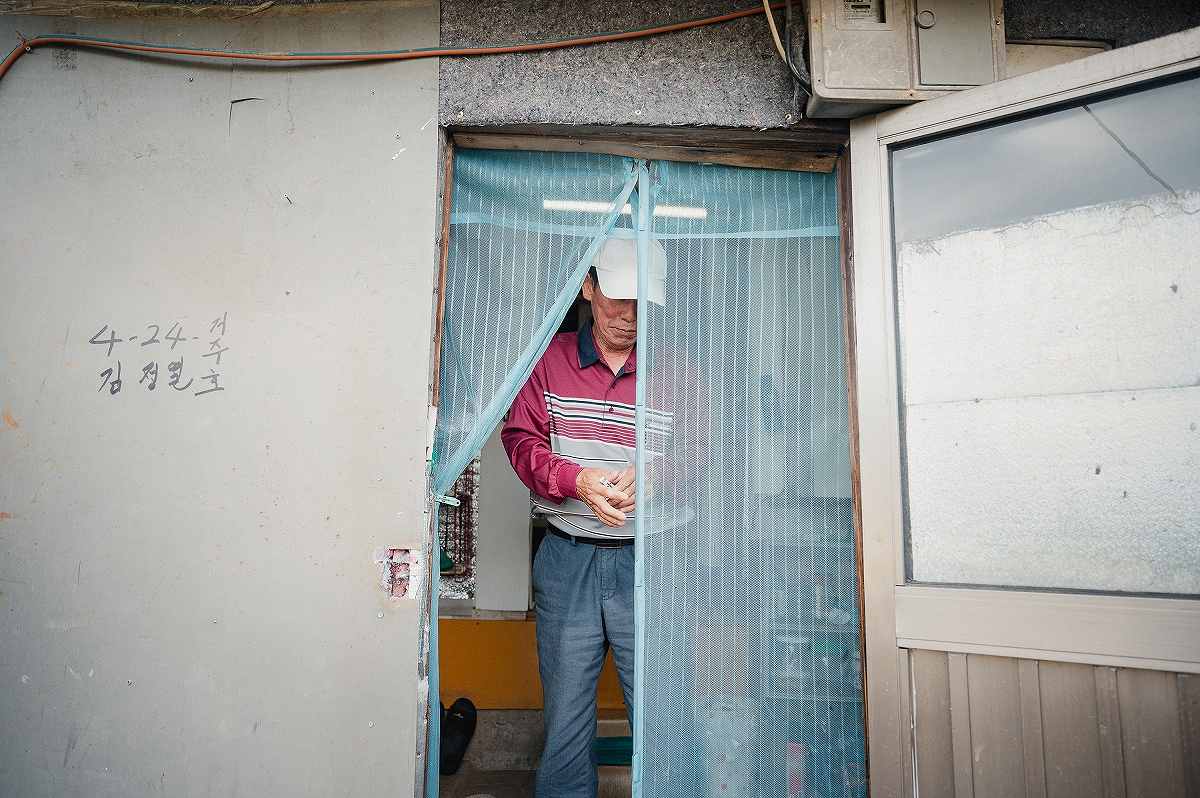
Kim fixes mosquito netting at his Guryong home.
Kim might live on the “wrong” side of Gangnam, but he takes pride in his patch of real estate. Less than a mile from Jo’s pristine gated community, Kim lives in a shack that he calls “one of the best” in Guryong.
It is made from scrap materials including plywood, metal and plastic sheets. Rain leaks through the roof during the monsoon season. He uses communal toilets and baths. But after 35 years here, he said, it “does not really bother me anymore.”
“Here, I can breathe in the mountain air. I can listen to my neighbors chatting or just play with stray dogs,” the former construction worker said. “I see those matchbox apartments across the road and think about what life would be like over there,” he said, nodding at the high-rises. “I would probably end up feeling isolated and depressed.”
– – –
Kim Chong-ho, 60, missionary
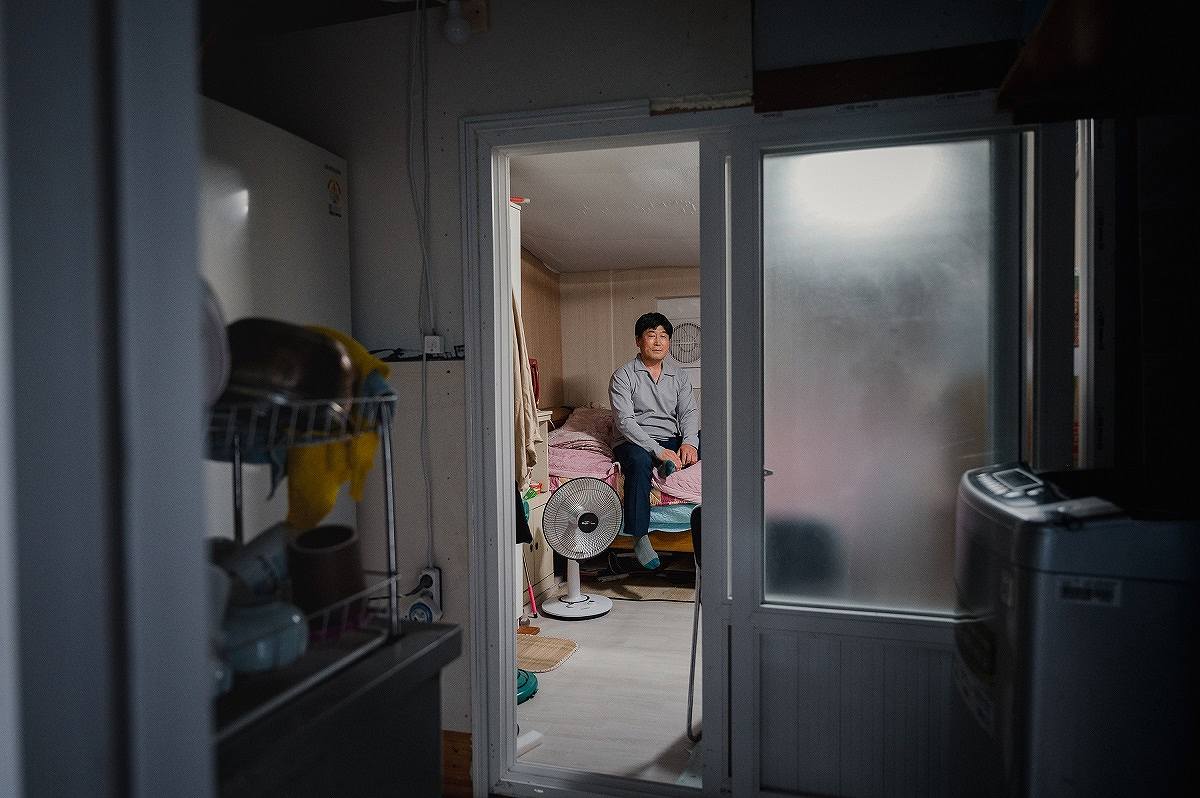
Kim in his one-bedroom Guryong home.
Kim is bracing for this summer’s monsoon season. He did some repair work on his one-bedroom shack after it was hit by a record rainfall and typhoons last summer.
He first set foot in Guryong three decades ago, when he came to Seoul from a southern island as a penniless jobseeker. “No one wants to come here, but we [Guryong residents] ended up here because there was no other option,” he said.
Old and impoverished residents of Guryong can’t afford even the rent-controlled public housing proposed by the government as an alternative, he said.
“We are also Gangnam residents, but the district officials refuse to accommodate to us. They treat us as voiceless,” he said.
"News Services" POPULAR ARTICLE
-

American Playwright Jeremy O. Harris Arrested in Japan on Alleged Drug Smuggling
-

Taiwan President Shows Support for Japan in China Dispute with Sushi Lunch
-

Japan’s Nikkei Stock Average as JGB Yields, Yen Rise on Rate-Hike Bets
-

Japan’s Nikkei Stock Average Licks Wounds after Selloff Sparked by BOJ Hike Bets (UPDATE 1)
-

Japanese Bond Yields Zoom, Stocks Slide as Rate Hike Looms
JN ACCESS RANKING
-

Japan’s Hopes for Seafood Exports Shot Down in China Spat
-

Keidanren Chairman Yoshinobu Tsutsui Visits Kashiwazaki-Kariwa Nuclear Power Plant; Inspects New Emergency Safety System
-

Japan to Charge Foreigners More for Residence Permits, Looking to Align with Western Countries
-

Japan Exports Rise in October as Slump in U.S. Sales Eases
-

Govt Aims to Expand NISA Program Lineup, Abolish Age Restriction






